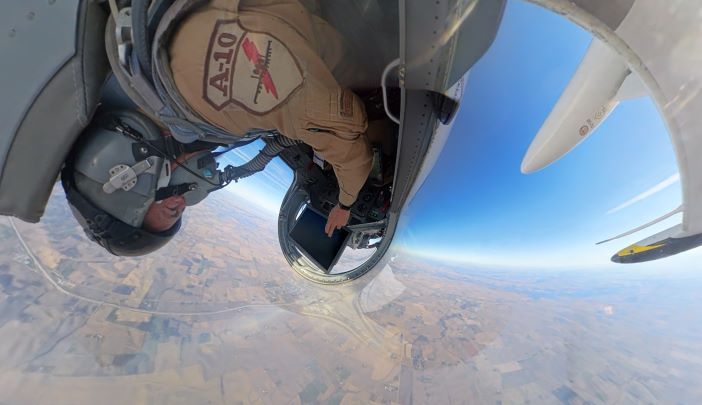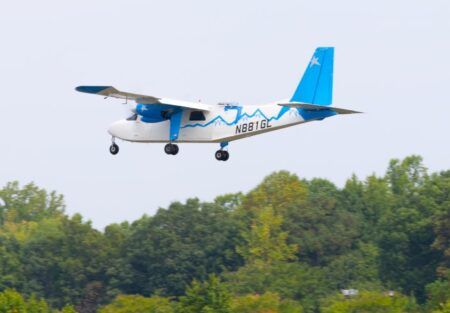Lockheed Martin has flight tested a crewed-uncrewed teaming mission where an airborne battle manager issued real-time commands to AI-controlled aircraft through a touchscreen pilot vehicle interface (PVI).
Crewed-uncrewed teaming is a type of operations where unmanned drones work with a piloted aircraft, scouting ahead or doing other high risk missions. The concept is being developed by several air forces around the world, and is seen by the defence sector as an important component of the next generation of fighter jets.
Lockheed Martin’s latest flight tests were done by its Skunk Works innovation group, its Demonstrations and Prototypes organization and the University of Iowa’s Operator Performance Laboratory (OPL).
During the flight tests, the Skunk Works and OPL teams simulated an offensive counter air mission where an airborne, human “battle manager” aboard an L-39 Albatros jet trainer assigned targets to two AI-controlled L-29 Delfin jets, which then worked together to defeat two mock enemy jets using simulated mission systems and weapons.
John Clark, vice president and general manager at Lockheed Martin Skunk Works said, “The work we’re doing with the University of Iowa’s OPL is foundational for the future of air combat, where a family of crewed and uncrewed systems will work together to execute complex missions. We’re excited to leverage our diverse skillsets to advance all elements of this new way of operating.”
The flight tests follow previous experiments that demonstrated AI-controlled air-to-ground jamming and geolocation. This year, the tests shifted to AI in air-to-air combat, where AI sends commands directly to the planes’ autopilots. This is the third test of this type and the first to include a real-time human battle manager overseeing the AI’s actions.
Skunk Works said it is dedicated to enabling crewed-uncrewed teaming to optimize operational flexibility, abbreviate data-to-decision timelines and improve pilot safety.





